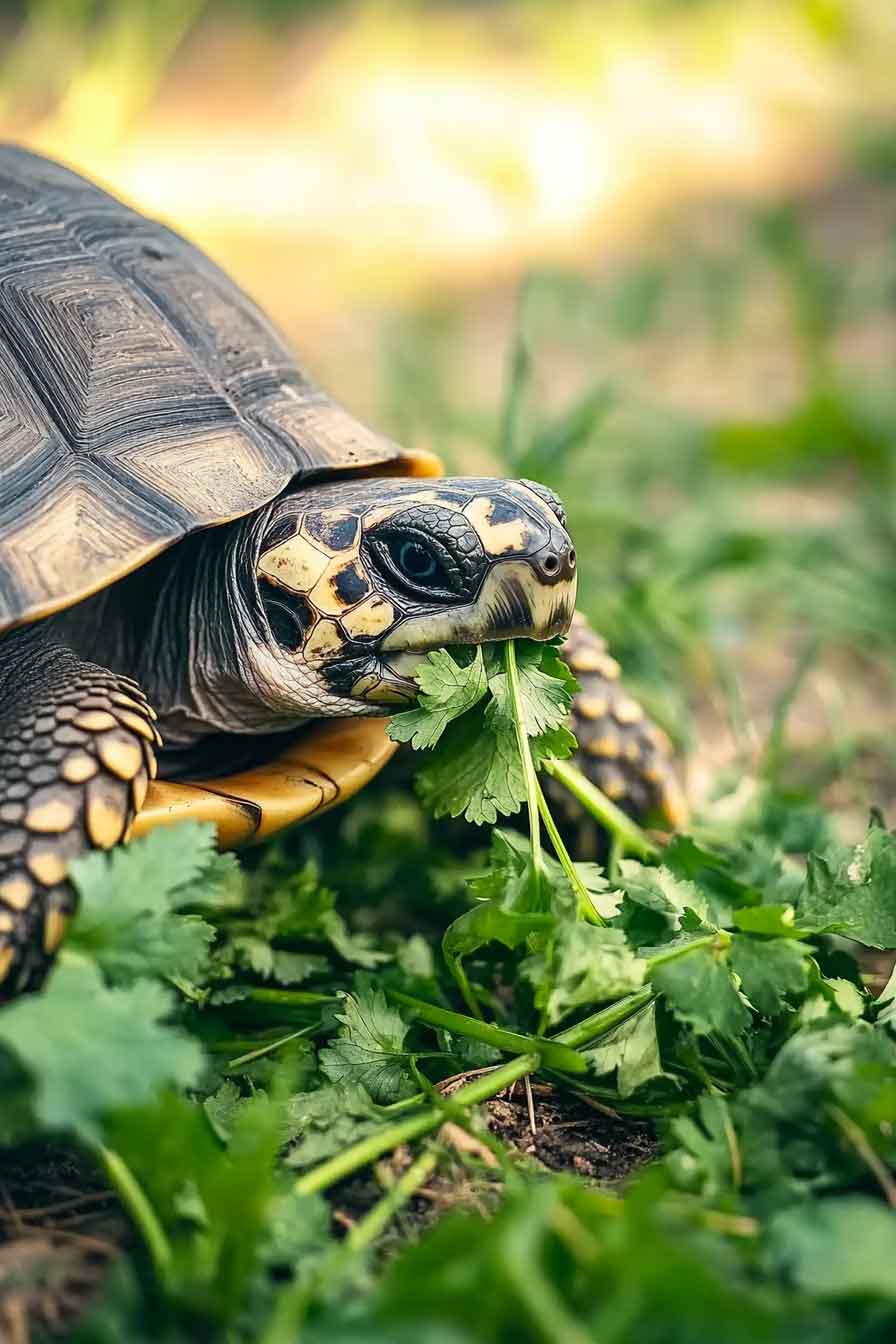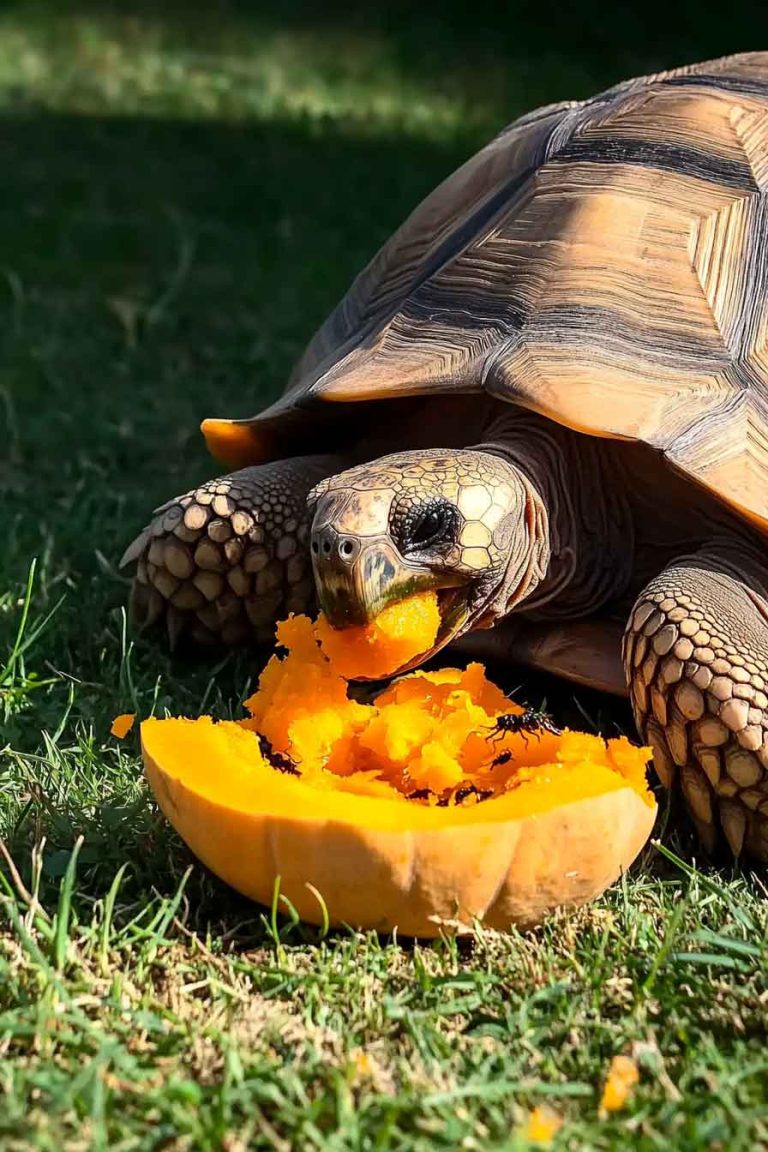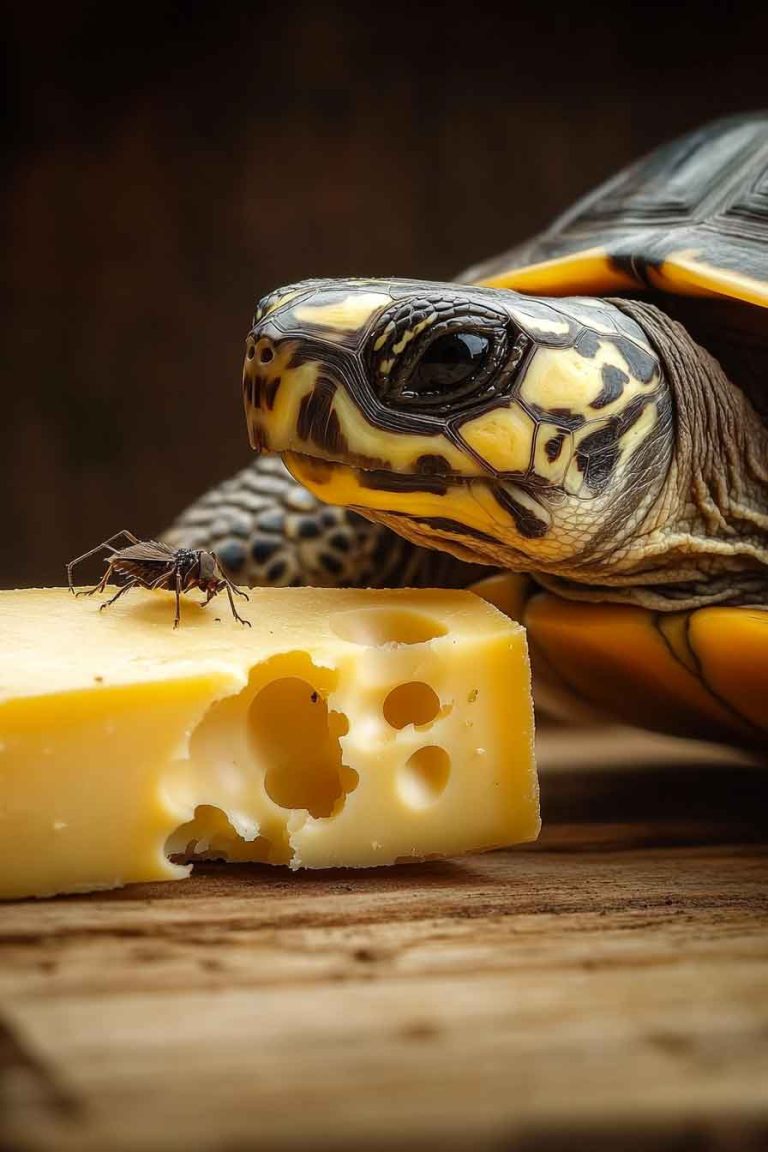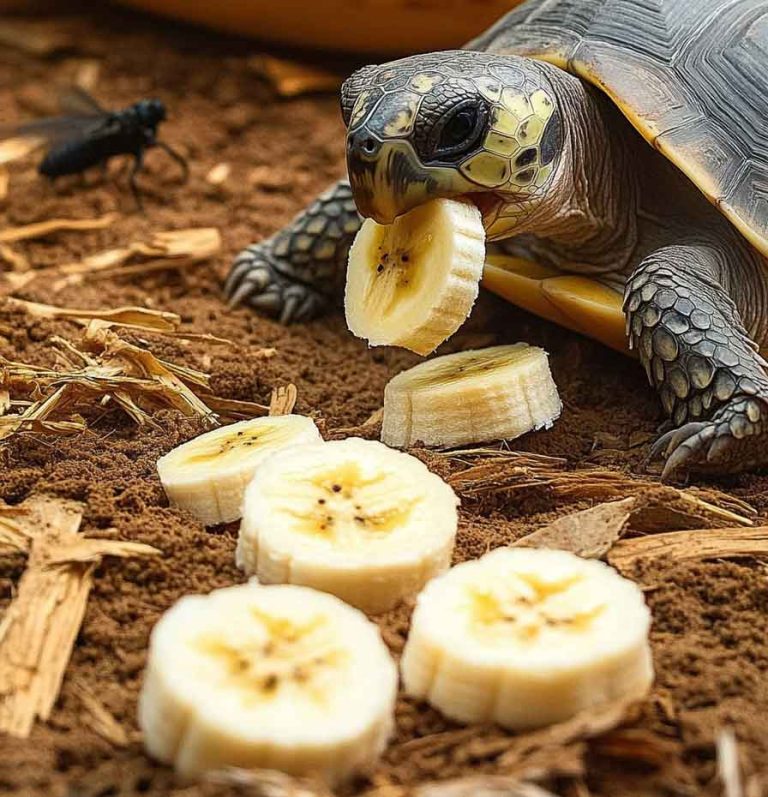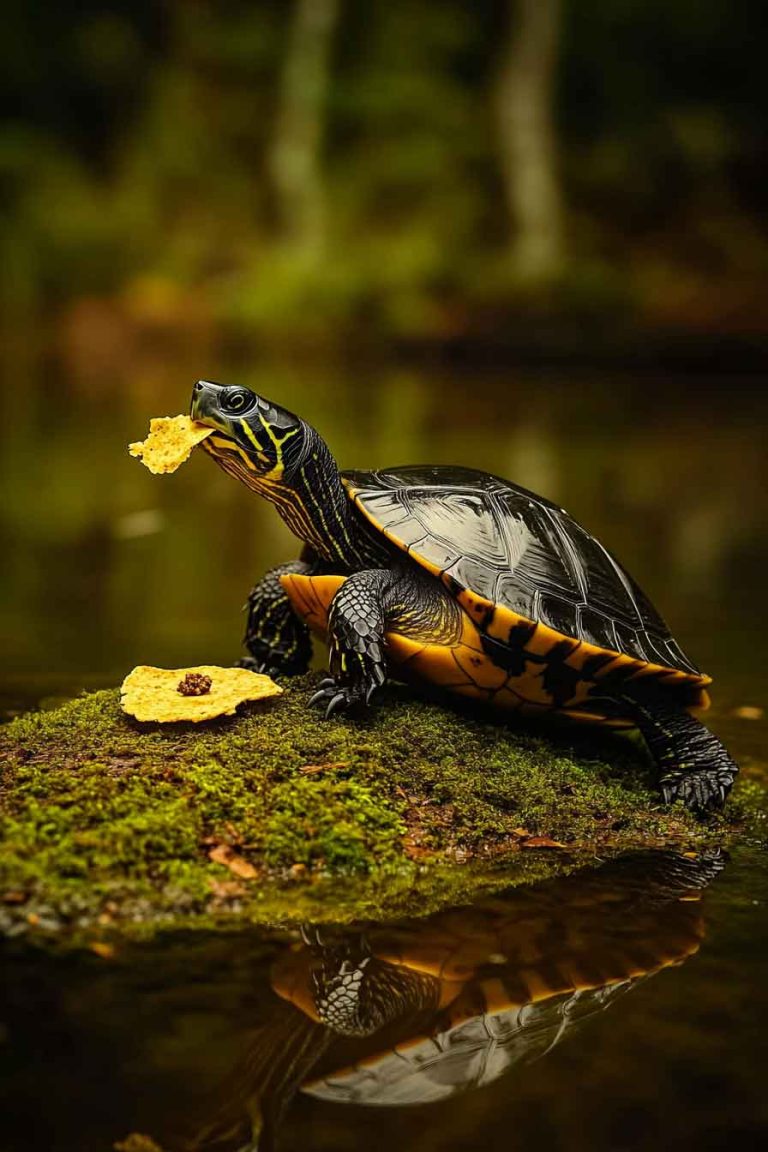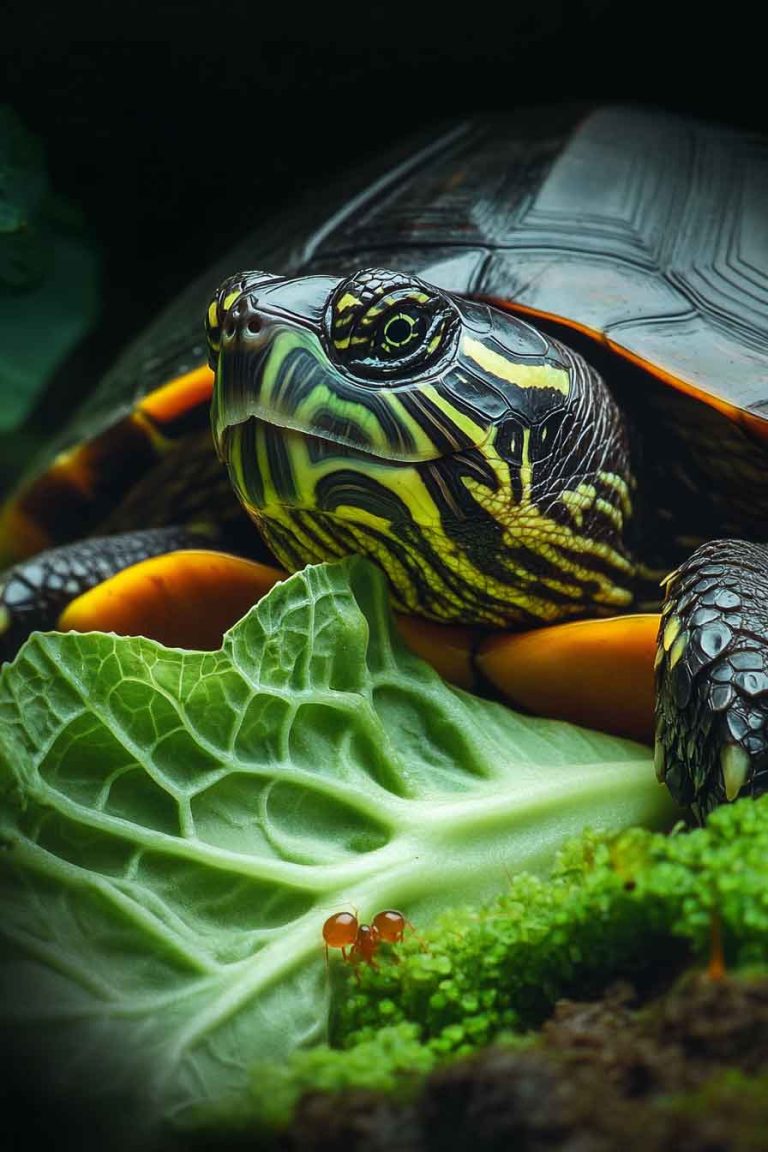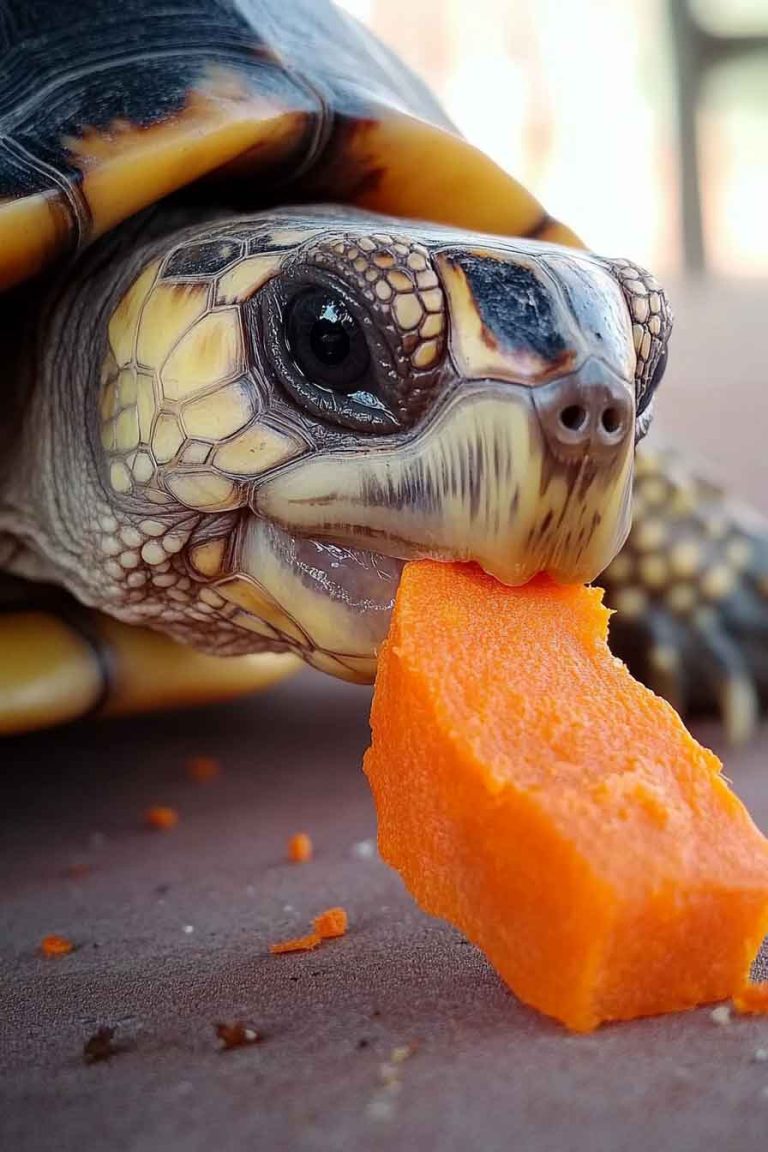Can Turtles Eat Cilantro? Safe Herb or Risky Treat?
As a turtle owner, I know how tempting it can be to share your favorite herbs and greens with your shelled companion. When I’m preparing a fresh salad or cooking with cilantro, I often wonder if my turtle would enjoy this fragrant herb as much as I do. If you’ve ever found yourself asking “Can…
As a turtle owner, I know how tempting it can be to share your favorite herbs and greens with your shelled companion. When I’m preparing a fresh salad or cooking with cilantro, I often wonder if my turtle would enjoy this fragrant herb as much as I do. If you’ve ever found yourself asking “Can turtles eat cilantro?” – you’re in the right place!
The good news is that yes, turtles can eat cilantro! This leafy green herb is not only safe for most turtle species but can actually be a nutritious addition to their diet when served properly. However, like with any food, there are important considerations I want to share with you about feeding cilantro to your turtle.
In this comprehensive guide, I’ll walk you through everything you need to know about turtles and cilantro – from nutritional benefits to proper serving methods and potential precautions.
Can You Feed Cilantro To Your Pet Turtle?
Absolutely! I’m happy to tell you that cilantro is generally safe for turtles and can be a healthy treat when given in moderation. Unlike some herbs that can be toxic to our reptilian friends, cilantro belongs to the group of turtle-friendly greens that can enhance their diet.
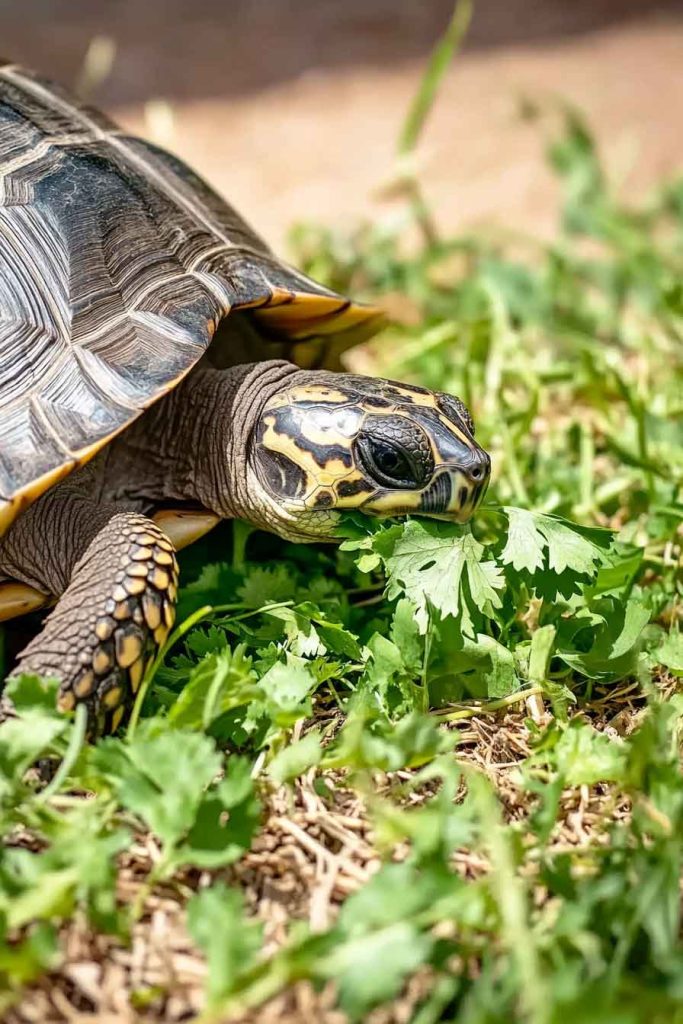
Let me break down the nutritional profile of cilantro so you can understand why it’s beneficial for your turtle. Here’s what you’ll find in 100 grams of fresh cilantro:
Carbohydrates: 3.67 g Sugar: 0.87 g Protein: 2.13 g Calcium: 67 mg Phosphorus: 48 mg Vitamin A: 337 mcg Vitamin C: 27 mg Vitamin K: 310 mcg Folate: 62 mcg Potassium: 521 mg Magnesium: 26 mg Iron: 1.77 mg
Looking at these numbers, I can see several reasons why cilantro makes a good choice for turtles. The calcium to phosphorus ratio is approximately 1.4:1, which is much better than many vegetables (though not quite the ideal 2:1 ratio). The relatively low sugar content means it won’t cause digestive upset, and the high vitamin content provides excellent nutritional value.
What really impresses me about cilantro is its vitamin K content – this vitamin is crucial for proper blood clotting and bone health in turtles. The significant amounts of vitamin A also support good vision and immune system function.
Do Turtles Like Cilantro?
In my experience, turtles’ preferences for cilantro vary quite a bit. Some turtles absolutely love the strong, distinctive flavor of cilantro and will eagerly munch on it. Others might be more hesitant initially, especially if they’re not used to herbs in their diet.
I’ve noticed that younger turtles tend to be more adventurous with new foods, including cilantro. If your turtle hasn’t tried cilantro before, don’t be discouraged if they ignore it at first – it sometimes takes a few tries before they develop a taste for new foods.
The aromatic nature of cilantro can actually be beneficial. Many turtles are attracted to foods with strong scents, and cilantro’s distinctive aroma might encourage picky eaters to try something new.
Health Benefits of Cilantro for Turtles
I’m excited to share with you the numerous health benefits that cilantro can provide for your turtle:
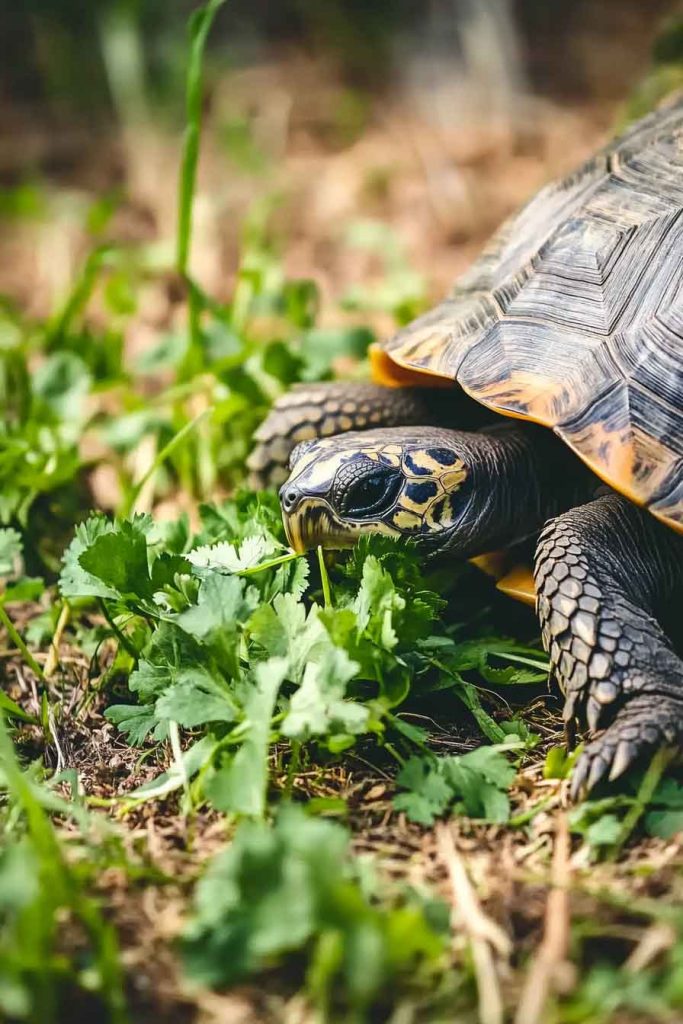
Rich in Antioxidants
Cilantro is packed with antioxidants that help protect your turtle’s cells from damage. These compounds can support overall health and may help boost their immune system. As a responsible turtle parent, I appreciate any food that can help keep my pet healthy naturally.
Vitamin A for Vision and Immunity
The high vitamin A content in cilantro is fantastic for maintaining good eyesight and supporting immune function. This is particularly important for turtles, as vitamin A deficiency can lead to serious health issues including respiratory infections and eye problems.
Supports Bone Health
With its decent calcium content and excellent vitamin K levels, cilantro can contribute to maintaining strong bones and shells. While it shouldn’t be your turtle’s primary calcium source, every bit helps in supporting their skeletal health.
Aids Digestion
I’ve found that many turtles seem to digest cilantro quite well. The herb has natural digestive properties that may help with overall gut health when given as part of a balanced diet.
Natural Detoxification
Cilantro has been shown to have natural detoxifying properties in many animals. While more research is needed specifically for turtles, these properties could potentially help support your turtle’s natural detox processes.
How Much Cilantro Should Turtles Eat?
Moderation is key when it comes to feeding cilantro to your turtle. I recommend treating cilantro as a supplementary food rather than a staple. Here’s my approach to portion control:
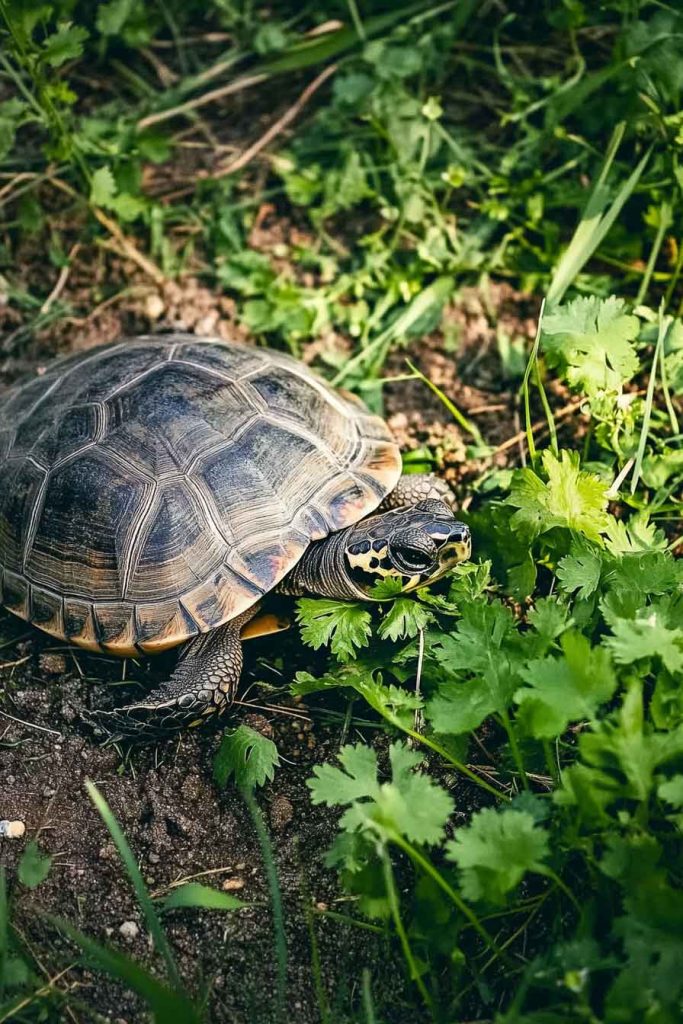
For adult turtles, a few sprigs of cilantro 2-3 times per week is plenty. I like to chop it up and mix it with other greens to create variety in their diet. Think of cilantro as a seasoning or garnish rather than a main course.
The key is balance – cilantro should never make up more than 10% of your turtle’s total diet. The majority of their nutrition should still come from species-appropriate staples like commercial turtle pellets, appropriate vegetables, and other proven foods.
Can You Feed Cilantro to Baby Turtles?
Yes, you can feed cilantro to baby turtles, but with extra caution. Baby turtles have more sensitive digestive systems and different nutritional needs compared to adults.
For hatchlings and juvenile turtles, I recommend starting with very small amounts – just a tiny pinch of finely chopped cilantro mixed with their regular food. Watch carefully for any digestive upset or changes in behavior.
Baby turtles need more protein in their diet compared to adults, so make sure cilantro and other vegetables don’t replace their essential protein sources. Always consult with a reptile veterinarian before introducing new foods to very young turtles.
Proper Way to Prepare Cilantro for Turtles
Let me walk you through the proper preparation method that I use for my turtle:
Step 1: Choose Fresh Cilantro
Always select fresh, crisp cilantro with bright green leaves. Avoid wilted or yellowing herbs, as these may have reduced nutritional value or could potentially harbor bacteria.
Step 2: Wash Thoroughly
Rinse the cilantro under cool running water to remove any dirt, pesticides, or other contaminants. I like to soak it for a few minutes in cool water, then rinse again.
Step 3: Remove Tough Stems
While the tender stems of cilantro are edible, I prefer to remove the thicker, tougher stems and focus on the leaves and thin stems for easier digestion.
Step 4: Chop Appropriately
Chop the cilantro into small, manageable pieces. The size should be appropriate for your turtle – smaller pieces for smaller turtles, slightly larger for bigger species.
Step 5: Serve Fresh
Always serve cilantro fresh rather than letting it sit out. Remove any uneaten portions within a few hours to prevent spoilage.
Potential Risks and Precautions
While cilantro is generally safe, there are a few precautions I want you to be aware of:
Pesticide Concerns
Conventionally grown cilantro may contain pesticide residues that could be harmful to your turtle. I always recommend choosing organic cilantro when possible, or at least washing thoroughly before serving.
Oxalates
Cilantro contains some oxalates, compounds that can interfere with calcium absorption when consumed in large quantities. This is another reason why moderation is important – too much cilantro could potentially contribute to calcium deficiency over time.
Individual Sensitivities
Just like people, some turtles may have individual sensitivities to certain foods. Always introduce cilantro gradually and watch for any signs of digestive upset, changes in appetite, or unusual behavior.
Not a Complete Food
Remember that cilantro is a supplement, not a complete food. It should never replace the balanced nutrition your turtle gets from high-quality commercial turtle food and other proven dietary staples.
Species-Specific Considerations
Different turtle species may have varying responses to cilantro:
Box Turtles and Cilantro
Box turtles, being omnivores with a varied diet, typically handle cilantro well. The herb can add nice variety to their plant-based foods. However, stick to the same moderation guidelines.
Red-Eared Slider Turtles and Cilantro
Red-eared sliders can safely eat cilantro, but since they’re primarily aquatic and have slightly different digestive systems, start with very small amounts and observe how they respond.
Painted Turtles and Cilantro
Painted turtles, like other semi-aquatic species, can enjoy cilantro as an occasional treat. Their natural diet includes various aquatic plants, so they may readily accept this herb.
Alternatives to Cilantro
If your turtle doesn’t take to cilantro or you want to provide variety, here are some other safe herbs and greens I recommend:
- Fresh parsley (in moderation)
- Dandelion greens
- Collard greens
- Mustard greens
- Endive
- Escarole
- Fresh basil (occasionally)
Video of a Turtle Eating Cilantro
I love watching turtles explore new foods! Here’s what you might observe when offering cilantro to your turtle for the first time:
Notice how the turtle investigates the new food first, often using its sense of smell before taking that first bite. Some turtles dive right in, while others are more cautious – both reactions are perfectly normal.
Frequently Asked Questions (FAQs)
Can Box Turtles Eat Cilantro?
Yes, box turtles can safely eat cilantro in moderation. As omnivores, they can handle the herb well as part of their varied diet. Just remember to keep portions small and infrequent.
Can Red-Eared Slider Turtles Eat Cilantro?
Absolutely! Red-eared sliders can enjoy cilantro as an occasional treat. Since they’re primarily aquatic, you might want to offer it while they’re on land during basking time.
Can Painted Turtles Eat Cilantro?
Yes, painted turtles can eat cilantro safely. Like other semi-aquatic turtles, they should receive it in moderation as part of a balanced diet that includes appropriate aquatic vegetation and protein sources.
How Often Can I Give My Turtle Cilantro?
I recommend offering cilantro no more than 2-3 times per week, and always in small portions. Think of it as a healthy treat rather than a dietary staple.
Should I Remove Cilantro Stems?
The tender stems of cilantro are safe for turtles, but I prefer to remove the thicker, tougher stems to make it easier to digest. Focus on the leaves and thin, tender stems.
Can Cilantro Replace Other Greens in My Turtle’s Diet?
No, cilantro should supplement, not replace, other important greens in your turtle’s diet. Variety is key to good turtle nutrition, so continue offering proven staples like collard greens and dandelion greens.
Conclusion
I hope this comprehensive guide has answered all your questions about feeding cilantro to your turtle! To summarize, cilantro can be a wonderful, nutritious addition to your turtle’s diet when offered properly and in moderation.
Remember the key points: choose fresh, organic cilantro when possible, wash it thoroughly, chop it appropriately, and offer it only 2-3 times per week in small portions. Always observe your turtle for any adverse reactions, and don’t let cilantro replace more nutritionally essential foods in their diet.
Your turtle’s health and happiness are the most important considerations. If you ever have concerns about introducing new foods or notice any changes in your turtle’s behavior or health, don’t hesitate to consult with a veterinarian who specializes in reptiles.
I love seeing fellow turtle enthusiasts provide varied, nutritious diets for their pets. With proper care and attention to nutrition, including the occasional cilantro treat, your turtle can live a long, healthy, and happy life!

